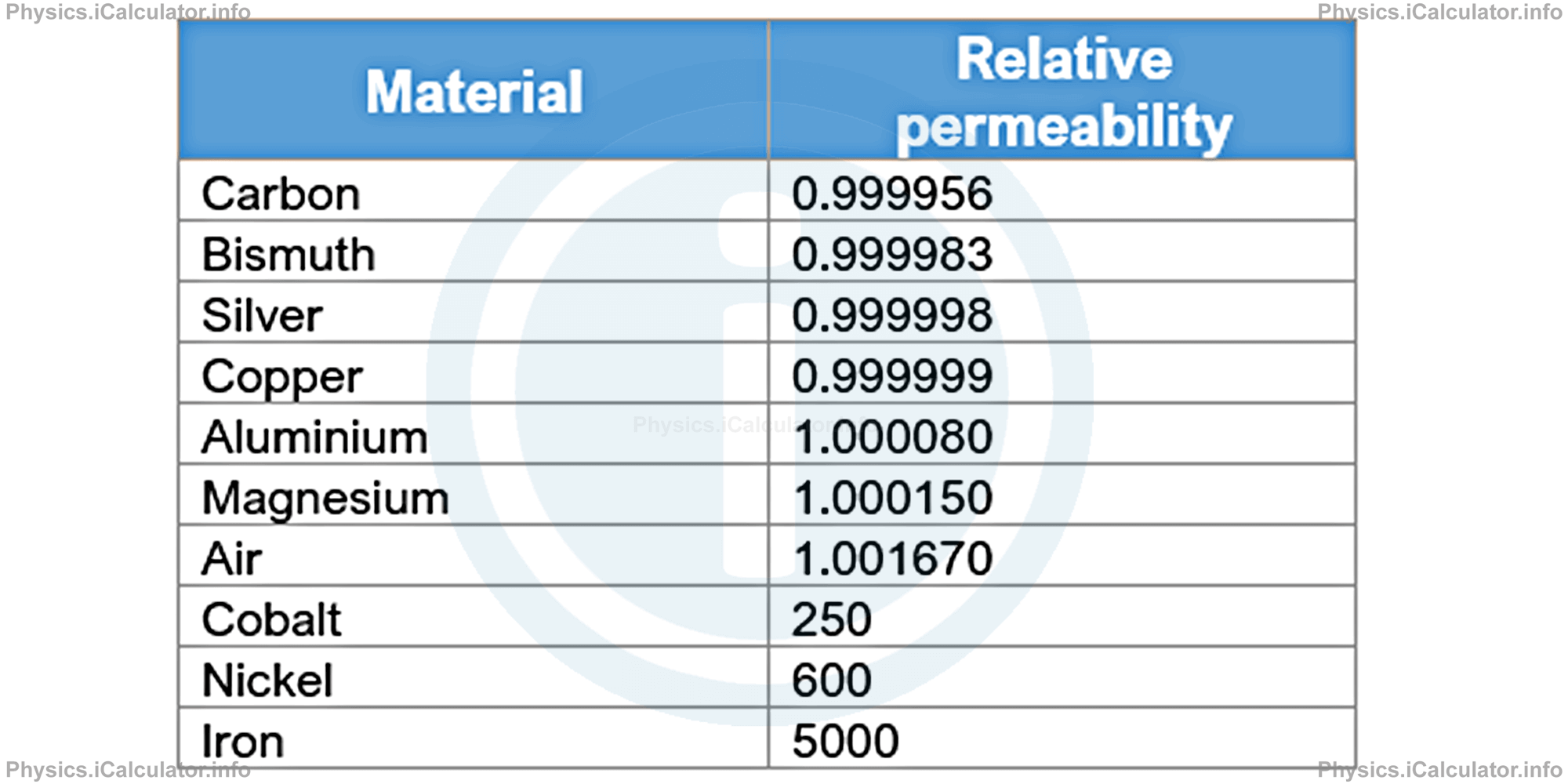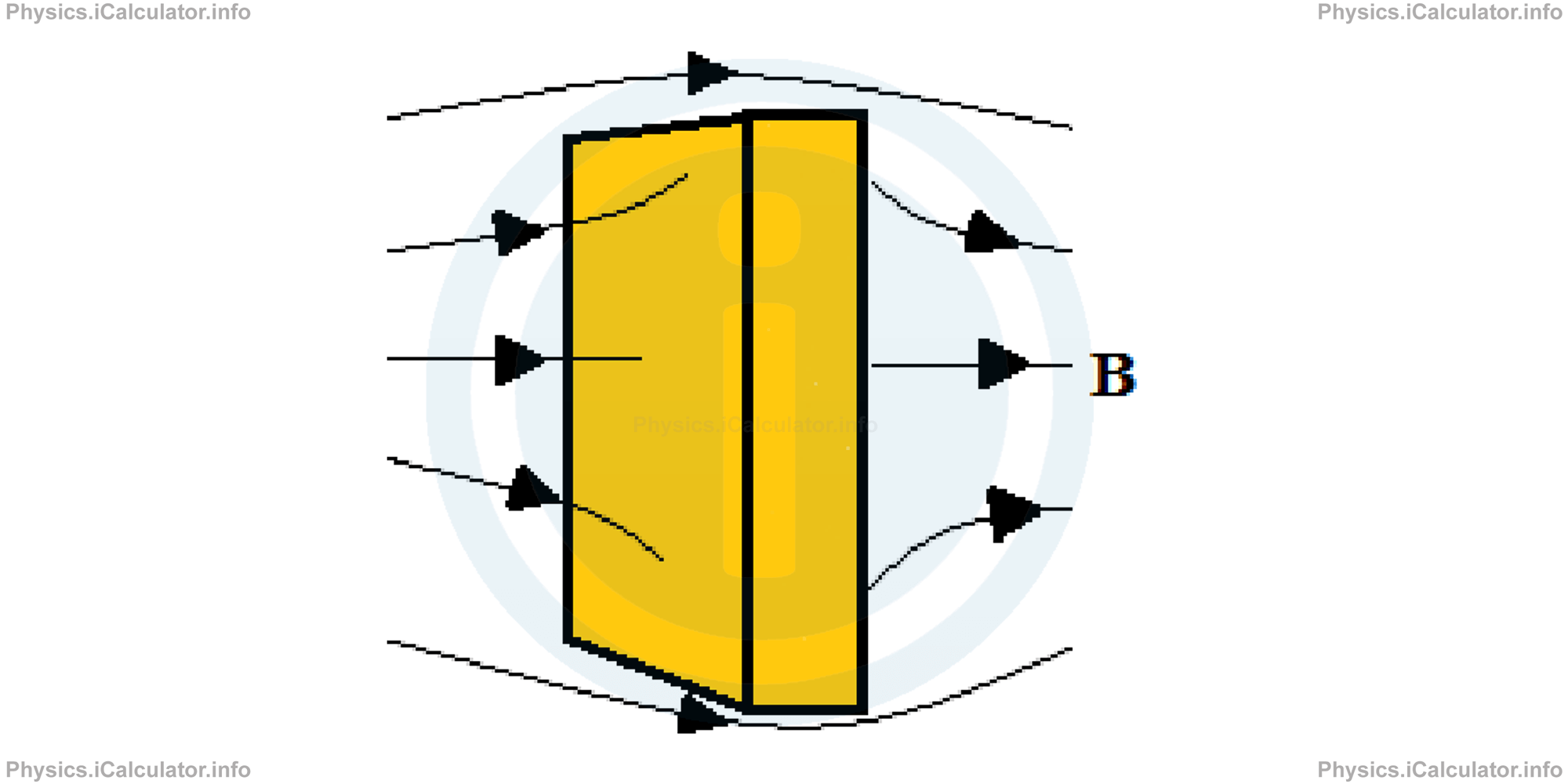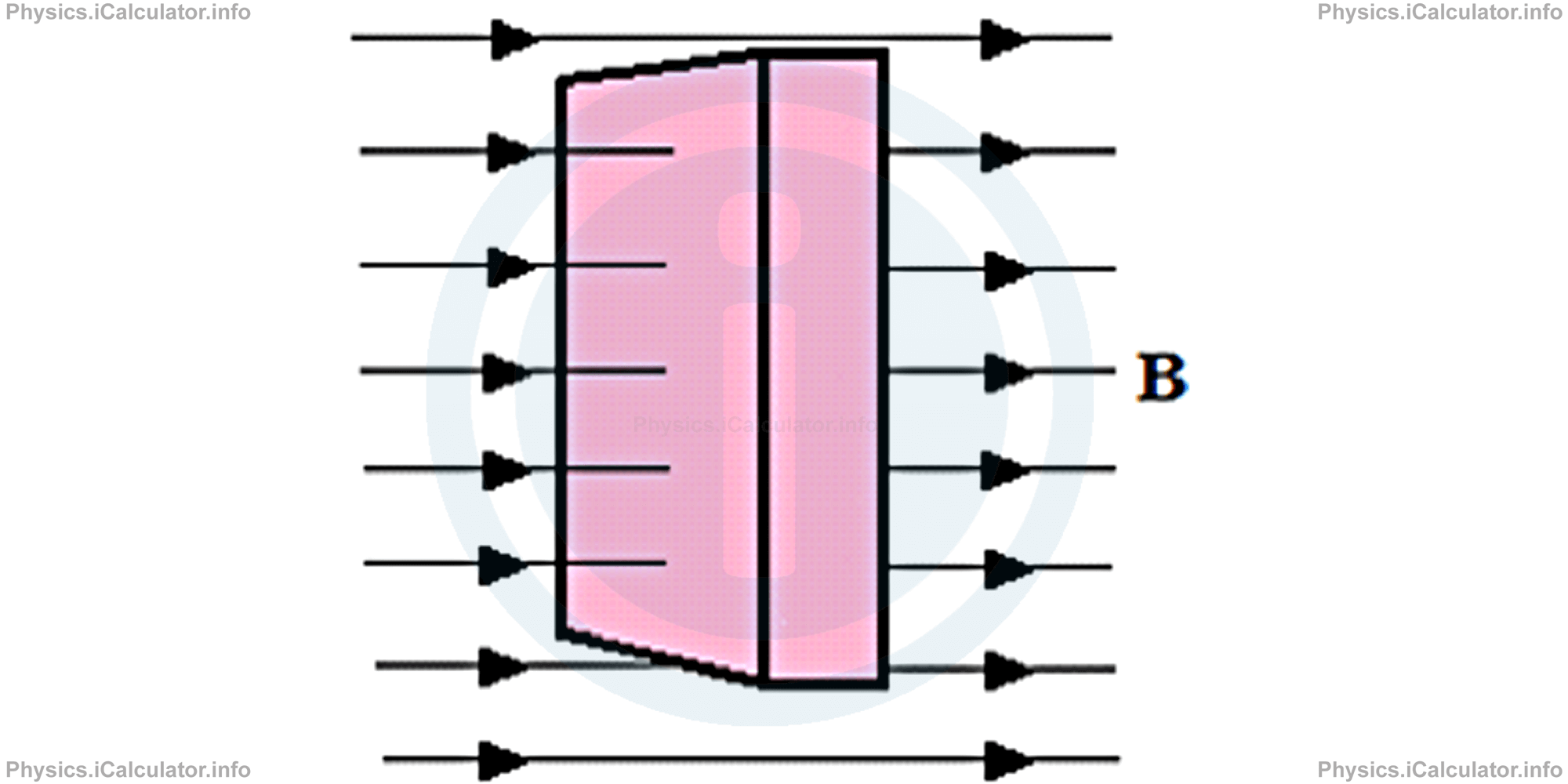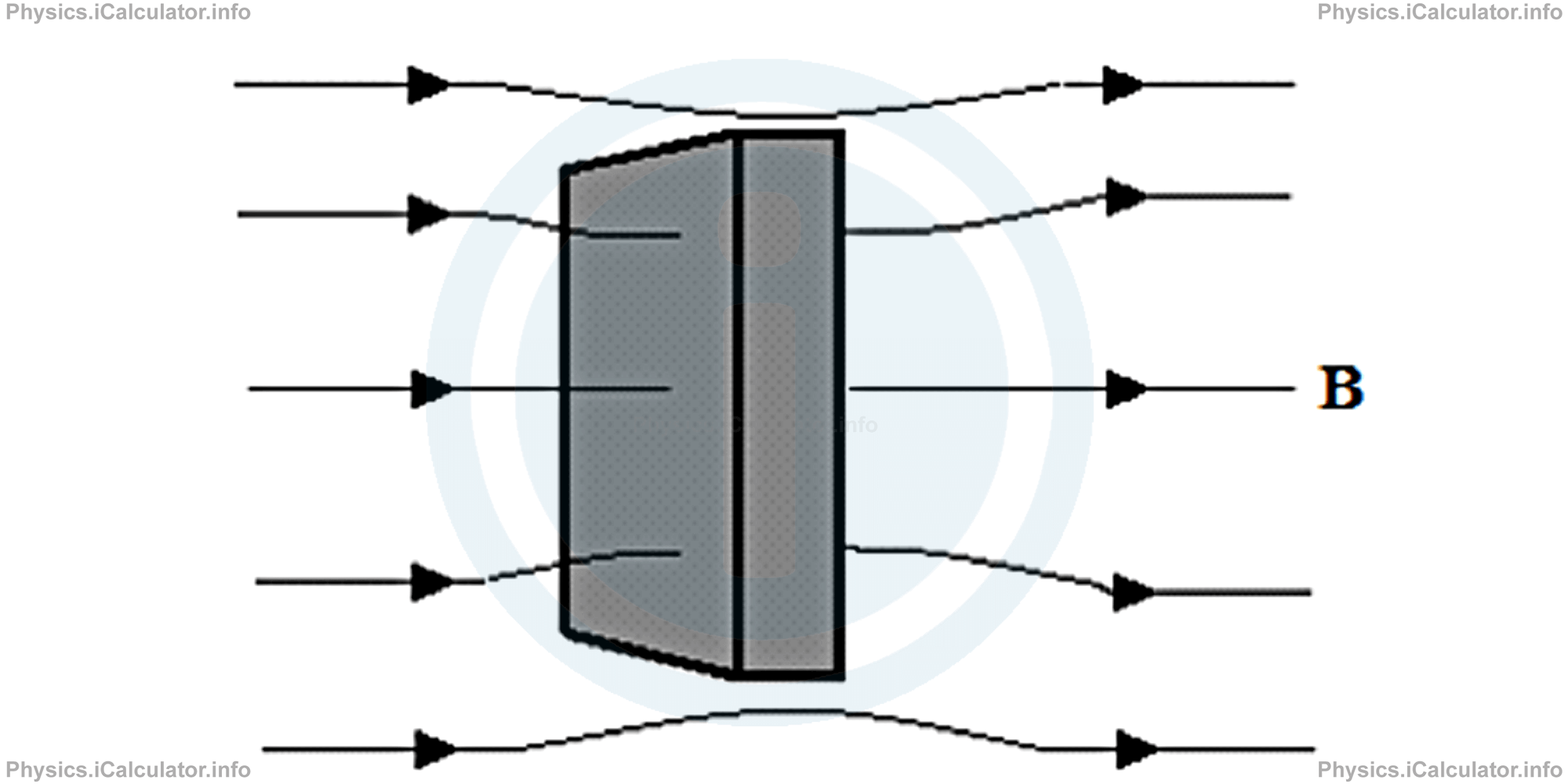Menu
Physics Lesson 16.2.4 - Magnetic Permeability. Relative Permeability. Diamagnetic, Paramagnetic and Ferromagnetic Materials
Please provide a rating, it takes seconds and helps us to keep this resource free for all to use
Welcome to our Physics lesson on Magnetic Permeability. Relative Permeability. Diamagnetic, Paramagnetic and Ferromagnetic Materials, this is the fourth lesson of our suite of physics lessons covering the topic of Magnetic Field Produced by Electric Currents, you can find links to the other lessons within this tutorial and access additional physics learning resources below this lesson.
Magnetic Permeability. Relative Permeability. Diamagnetic, Paramagnetic and Ferromagnetic Materials
In all formulae discussed in the previous paragraphs, the effect of the surrounding medium is assumed as negligible. This occurs when this medium is the vacuum. We included in all formulae the effect of vacuum by inserting the quantity known as vacuum magnetic permeability (or magnetic permeability of free space), which value is μ0 = 4π × 10-7 N/A2.
What if the magnetic field is not produced in vacuum but in another medium instead? In this case, we have to consider the effect of the other medium as well. We don't expect the magnetic field have the same value as if there was vacuum, due to the presence of extra matter, which affects the magnitude of magnetic field. Such a presence is represented through a quantity known as relative permeability, μr, which is calculated by
where B is the magnetic field in presence of a certain matter, B0 is the corresponding magnetic field in vacuum; μ and μ0 are the values of permeability in the presence of the given matter and in vacuum respectively.
The values of relative magnetic permeability of some materials are given in the table below.

If we look carefully the table above, we observe in the list three kind of materials:
- The first category includes materials that have a relative permeability slightly smaller than 1. They are known as diamagnetic materials. The magnetic field produced in them is slightly weaker than the magnetic field produced in the same circumstances but in vacuum.
Examples of diamagnetic materials include carbon, bismuth, silver, copper, etc. When a diamagnetic is placed inside a magnetic field, it is weakly magnetised in the opposite direction of magnetic field. As a result, the overall magnetic field decreases. Therefore, diamagnetic materials are used for decreasing the magnetic field of a given magnet when necessary. This means the magnetic field lines diverge from each other when approaching the material as shown in the figure below.
- The second category includes materials that have a relative permeability slightly higher than 1. They are known as paramagnetic materials. Examples of paramagnetic materials include aluminium, magnesium, air, etc.
When a diamagnetic is placed inside a magnetic field, it is slightly magnetised in the direction of this field. Therefore, the magnetic field lines slightly converge when approaching the material. However, this convergence cannot be seen at naked eye as it is too small to be noticeable and as a result, the magnetic field lines are parallel to each other as shown in the figure below.
- Ferromagnetic materials are those materials that have their relative permeability much greater than 1 (a few hundred to a few thousand times greater than 1). They are strongly magnetised when placed inside a magnetic field. As a result, the magnetic field enforces and the field lines converge when approaching the material, as shown in the figure below.
 Iron cobalt and nickel are examples of ferromagnetic materials. Due to their strong magnetic properties, ferromagnetic materials are used to produce artificial magnets.
Iron cobalt and nickel are examples of ferromagnetic materials. Due to their strong magnetic properties, ferromagnetic materials are used to produce artificial magnets.
You have reached the end of Physics lesson 16.2.4 Magnetic Permeability. Relative Permeability. Diamagnetic, Paramagnetic and Ferromagnetic Materials. There are 4 lessons in this physics tutorial covering Magnetic Field Produced by Electric Currents, you can access all the lessons from this tutorial below.
More Magnetic Field Produced by Electric Currents Lessons and Learning Resources
Whats next?
Enjoy the "Magnetic Permeability. Relative Permeability. Diamagnetic, Paramagnetic and Ferromagnetic Materials" physics lesson? People who liked the "Magnetic Field Produced by Electric Currents lesson found the following resources useful:
- Permeability Feedback. Helps other - Leave a rating for this permeability (see below)
- Magnetism Physics tutorial: Magnetic Field Produced by Electric Currents. Read the Magnetic Field Produced by Electric Currents physics tutorial and build your physics knowledge of Magnetism
- Magnetism Revision Notes: Magnetic Field Produced by Electric Currents. Print the notes so you can revise the key points covered in the physics tutorial for Magnetic Field Produced by Electric Currents
- Magnetism Practice Questions: Magnetic Field Produced by Electric Currents. Test and improve your knowledge of Magnetic Field Produced by Electric Currents with example questins and answers
- Check your calculations for Magnetism questions with our excellent Magnetism calculators which contain full equations and calculations clearly displayed line by line. See the Magnetism Calculators by iCalculator™ below.
- Continuing learning magnetism - read our next physics tutorial: Magnetic Force on a Current Carrying Wire. Ampere's Force
Help others Learning Physics just like you
Please provide a rating, it takes seconds and helps us to keep this resource free for all to use
We hope you found this Physics lesson "Magnetic Field Produced by Electric Currents" useful. If you did it would be great if you could spare the time to rate this physics lesson (simply click on the number of stars that match your assessment of this physics learning aide) and/or share on social media, this helps us identify popular tutorials and calculators and expand our free learning resources to support our users around the world have free access to expand their knowledge of physics and other disciplines.
Magnetism Calculators by iCalculator™
- Angular Frequency Of Oscillations In Rlc Circuit Calculator
- Calculating Magnetic Field Using The Amperes Law
- Capacitive Reactance Calculator
- Current In A Rl Circuit Calculator
- Displacement Current Calculator
- Electric Charge Stored In The Capacitor Of A Rlc Circuit In Damped Oscillations Calculator
- Electric Power In A Ac Circuit Calculator
- Energy Decay As A Function Of Time In Damped Oscillations Calculator
- Energy Density Of Magnetic Field Calculator
- Energy In A Lc Circuit Calculator
- Faradays Law Calculator
- Frequency Of Oscillations In A Lc Circuit Calculator
- Impedance Calculator
- Induced Emf As A Motional Emf Calculator
- Inductive Reactance Calculator
- Lorentz Force Calculator
- Magnetic Dipole Moment Calculator
- Magnetic Field At Centre Of A Current Carrying Loop Calculator
- Magnetic Field In Terms Of Electric Field Change Calculator
- Magnetic Field Inside A Long Stretched Current Carrying Wire Calculator
- Magnetic Field Inside A Solenoid Calculator
- Magnetic Field Inside A Toroid Calculator
- Magnetic Field Produced Around A Long Current Carrying Wire
- Magnetic Flux Calculator
- Magnetic Force Acting On A Moving Charge Inside A Uniform Magnetic Field Calculator
- Magnetic Force Between Two Parallel Current Carrying Wires Calculator
- Magnetic Potential Energy Stored In An Inductor Calculator
- Output Current In A Transformer Calculator
- Phase Constant In A Rlc Circuit Calculator
- Power Factor In A Rlc Circuit Calculator
- Power Induced On A Metal Bar Moving Inside A Magnetic Field Due To An Applied Force Calculator
- Radius Of Trajectory And Period Of A Charge Moving Inside A Uniform Magnetic Field Calculator
- Self Induced Emf Calculator
- Self Inductance Calculator
- Torque Produced By A Rectangular Coil Inside A Uniform Magnetic Field Calculator
- Work Done On A Magnetic Dipole Calculator